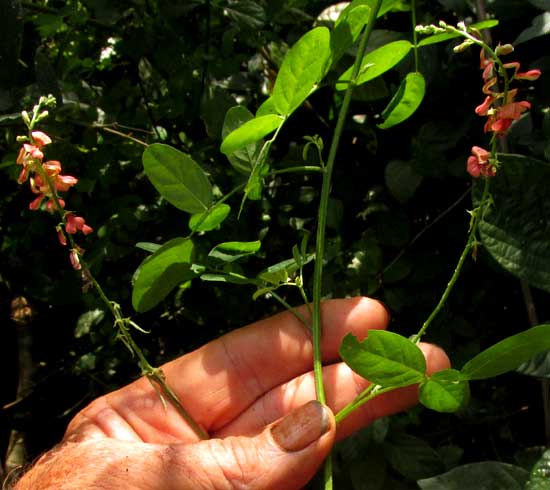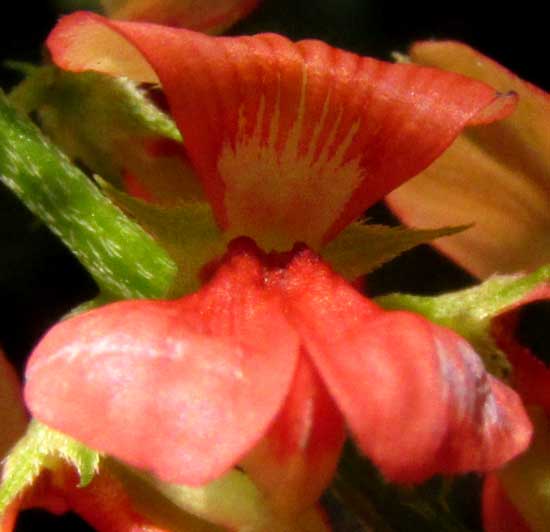Excerpts from Jim Conrad's
Naturalist Newsletter
from the December 31, 2017 Newsletter issued from Rancho Regenesis in the woods ±4kms west of Ek Balam Ruins; elevation ~40m (~130 ft), N20.876°, W88.170°; north-central Yucatán, MÉXICO
ASIAN INDIGO FLOWERING

We've met several indigo plants, genus Indigofera of the Bean Family, certain species within the genus providing the famous indigo dye. Indigo species usually share certain features such as the blossoms' general shape, especially their prominent top petals, or "standards," their pinkish-red color, and the plants' stems and leaves bearing short, slender, somewhat stiff, close-lying hairs. You might enjoy comparing "variations on the indigo plant theme" among the species we've seen so far:
Our Coastal Indigo page is at www.backyardnature.net/n/h/indigo2.htm
Our Lindheimer's Indigo page is at www.backyardnature.net/n/h/indigo.htm
Our Guatemalan Indigo page is at www.backyardnature.net/mexnat/indigof.htm
Now notice these features as expressed by the plant found at the garden's weedy edge this week, shown at the top of this page. Its flowers up close are shown below:

A landing pollinator's view of the corolla's throat is seen below:

It's pinnately compound leaf with five leaflets, the terminal one of which has a nice stalk, and with all the leaves with the right kind of low-lying or "appressed" hairs, is shown at www.backyardnature.net/n/17/171231iq.jpg
The indigo genus Indigofera is an especially large one, embracing over 750 species, including several species producing the indigo dye, and others that are medicinal. Our garden plant traditionally has been used medicinally to alleviate pain. It's INDIGOFERA TRITA ssp. SCABRA often known as Asian Indigo.
Asian Indigo is found throughout an extremely large part of the Earth's warmer parts, but its origin is uncertain. Probably it's from Eurasia, though it commonly occurs in much of tropical America and the West Indies. Being spread over such a large area, there's considerable geographic variation, and several subspecies are recognized. Most plants illustrated on the Internet bear leaves with only three leaflets, but the subspecies found in the Yucatan, ssp. scabra usually bears five.
The species typically is described as an herb, shrub or small tree. Our garden plant was about knee high, with a semi-woody base, and long, sprawling, slender, almost vine-like branches.